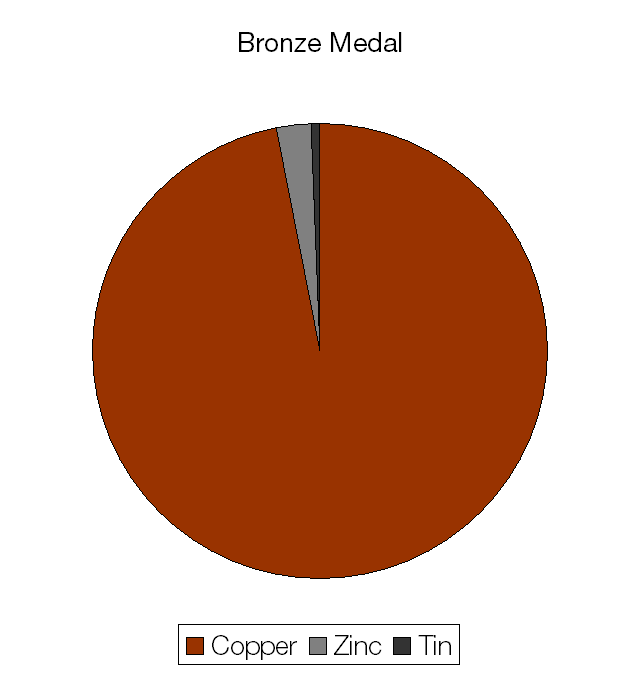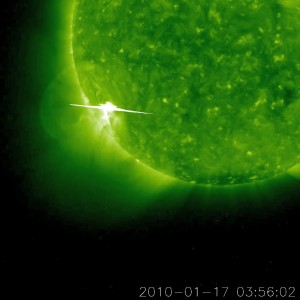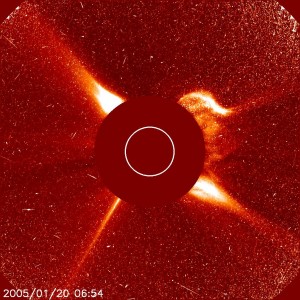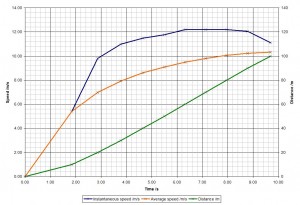The UK government has recently announced that it will be placing Starstreak HVM surface-to-air missiles on some roofs in London as a security measure during the 2012 Olympics. This has caused a bit of a kerfuffle.
Below are some thoughts on the issue from a physicist’s point of view.
What are Starstreak missiles and how do they work?
The Starstreak is a short-range laser-guided surface-to-air missile. When launched it very quickly accelerates to Mach 3.5 (1200 metres per second) and is then guided onto its target by a pair of laser beams projected from its ground-based aiming unit. Being laser-guided means that unlike heat-seaking or radar-seeking missiles the Starstreak cannot be avoided through the use of chaff or flares; however unlike those missiles it does not have fire-and-forget capabilities.

The Starstreak Light Multiple Launcher showing three Starstreak missiles and the guidance unit.
Once the Starstreak approaches its target it releases three 900 gram tungsten-coated beam-riding submunitions. Once one of the submunitions (or all three) impacts the target a short delay fuse is activated and the 450g of explosive inside the submunition explodes inside the target, throwing out tungsten alloy shrapnel and tearing it to pieces.
What scenario is the deployment of Starstreak missiles designed to prevent?
My guess is that the government is trying to defend against suicide bombers using aircraft as weapons. A heavy aircraft moving at high speed has a large amount of kinetic energy and this, coupled with the chemical potential energy in the fuel, makes it a formidable weapon.* The Olympics will concentrate a large number of people in a small space which makes the Olympic sites attractive targets.
If a plane is shot down, won’t it kill people when the wreckage lands?
It depends on the size of the aircraft involved. A light aircraft at high altitude wouldn’t produce much dangerous wreckage, a low-flying jumbo jet would. But falling wreckage will kill far fewer people than an aeroplane striking one of the Olympic sites would.
The force of the missile’s explosion will tear any aircraft into pieces, and once the structural integrity of the aircraft is ruined the force of the wind will tear it into further smaller pieces. Each of those falling pieces will reach terminal velocity relatively quickly and will therefore strike the ground at a lower speed than if it were flown into the ground under power. The video that has been going around showing a helicopter shot down by a Starstreak missile crash into the ground in a fireball is of a guidance test – the missile in the video was not carrying an explosive payload.
What about burning jet fuel hitting the ground?
This is much less of a problem. An explosion inside an aircraft, combined with the high-speeds involved would aerosolise the fuel, causing it to burn up very quickly in mid air. Again, this is a much lower risk than if a plane full of jet fuel were to crash into one of the Olympic stadia.
Won’t the missile launches damage the buildings they’re launched from?
No. The Starstreak missile is ejected from its launch tube by a low power first stage rocket motor that is extinguished before the missile leaves the tube. The powerful second stage motor doesn’t kick in until the missile is safely away from the launcher, meaning that there is almost no recoil at all. The launch of a Starstreak missile produces no significant overpressure so there is no danger to windows or walls. The missiles have to be launched from roofs or open spaces because the rocket requires a certain amount of space to accelerate to attack velocity.
* It was the chemical energy in the tens of thousands of litres of fuel that were responsible for the collapse of the Twin Towers in the 9/11 attacks. Had the planes had no fuel aboard the Towers would have survived.












